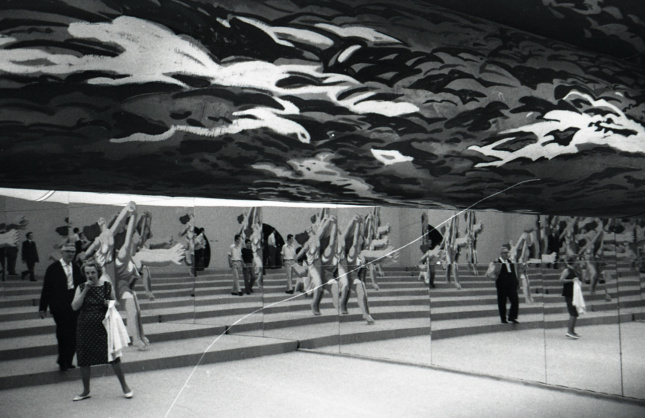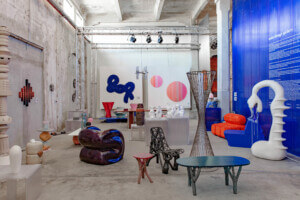Vittorio Gregotti’s passing on the 15th of March truly marks the end of an era. Gregotti is considered by many to be an outstanding figure whose career profoundly transformed the architectural practice in Italy and beyond.
Known for his stern commitment to modernism, Gregotti decried the profession’s downward slide into frivolity. The mantra “form follows function” had lost, according to Gregotti, all utility: The market became for all practical purposes the substitute for function. This would lead to the corruption of the design process itself, bringing Gregotti to famously declare in 2008 that the time had come for “the end of design.” Nonetheless, in his own practice, Gregotti remained true to his beliefs, succeeding in culling major architectural and urban design commissions throughout Europe and Asia.
Vittorio Gregotti’s reputation reached well beyond architecture—he was also a respected art theorist, editor, curator, and teacher. Gregotti’s interests led him on an intellectual trajectory that presents some contradictions however, at least to the extent that his convictions on architecture didn’t necessarily line up with his broader view on art culture. Gregotti, I would argue, benefited from his close contacts with two intellectual juggernauts of his day, Umberto Eco and Manfredo Tafuri. The first, a noted philosopher, semiologist, and writer, the latter the Marxist architectural historian and theorist. Umberto Eco’s influence on Gregotti in the mid-sixties helped shape the architect’s view on art theory, design, and communications. Manfredo Tafuri, in his assessment of Gregotti a decade later, attempted to expurgate these earlier mediatic dalliances in order to cement Gregotti’s position as one of the forerunners of a rigorous urban scale architectural practice.
From my perspective, the 1964 Milan Triennale Tempo Libero (Free Time), co-curated by Vittorio Gregotti and Umberto Eco represents a turning point in the history of experimental exhibitions, one of the rare joint endeavors between an architect and a philosopher. This odd pairing shares similarities with another strikingly revolutionary exhibition organized in the mid-eighties at the Pompidou Center in Paris, when Jean-Francois Lyotard and Thiery Chaput co-curated Les Immatériaux.
To create this exhibition at the Triennale, Gregotti and Eco plumbed a brilliant network of artists, philosophers, writers, and theorists who loosely belonged to Gruppo 63. Libero Tempo explored the city and the countryside, green spaces, sport and spectacles, and presented prototypes for domestic and leisure products. The design for the exhibition formed a procession of galleries, and spread into large muraled rooms and led into a spectacular kaleidoscopic volume—a darkened trapezoidal space featuring a multitude of reflected projections. In this hall of prisms, a singular filmmaker, Tinto Brass, then a young upstart recently back from Paris and deeply impressed by the French nouvelle vague cinema, created two short films on Tempo Libero and Tempo del lavoro.
The exhibition installed audio works, including musical performances in homage to James Joyce, composed by Luciano Berio. Joyce remained a key figure in Eco’s open work universe.
Clearly Gregotti absorbed Eco’s critical understanding of how communications and the mass media were transforming society, along with the importance of bridging the sciences and the arts to better glimpse the future. Gregotti’s fluency with the vast creative world outside architecture, surely bolstered his role when he became president of the Venice Biennale in the mid-seventies.

This open-mindedness doesn’t come across much in Gregotti’s curriculum, however. This probably has a lot to do with Manfredo Tafuri, who authored Vittorio Gregotti: Progetti e architetture for the Electa series on contemporary architecture in 1982. Tafuri’s introductory essay “Le avventure dell’oggetto: architetture di Vittorio Gregotti,” (roughly translated as “The adventures of the object: architectures of Vittorio Gregotti” ) went a long way to readdress the contradictions inherent in Gregotti’s practice. First, Tafuri sought to undercut the story of the 1964 Triennale, no doubt because of his general antipathy for Umberto Eco.
One should by experience be cautious when translating Tafuri into English, but if I can take a venture, Tafuri literally calls out Eco’s Open Work text before launching into a particularly scathing assessment of the exhibition: “The public therefore bombarded and violated. The sadism that dribbles out…”
Tafuri goes on to qualify his view: “At the triennial of 64 the work of the architects, of the semiologists, of the visual operators attempted an inter-coda operation in an attempt to dominate and possess in its entirety the mechanism of technological broadcasters, to build a language of plurality and ephemerality, to operate a multiversum without information centers.” Tafuri here is making a clean sweep of Gregotti’s involvement in this exhibition, considering it a failed attempt to properly harness the protocols of communication. But Tafuri then rescues Gregotti, by demonstrating that when the architect joins with Franco Purini in Palermo in 1970, he becomes transformed, moving ideologically towards anti-utopianism while simultaneously rejecting the facile seductions of the megastructure. Tafuri further declares that Gregotti moved empirically towards an introspective architecture about architecture and territory. Returning to the mysterious essay title concerning Gregotti’s practice, Tafuri states: “From the fetish of the object to the crisis of the object, therefore: the Gregottian arc of research recounts the stages in the historically marked process, experimenting with diverse formal organizations…”
I am not suggesting that Gregotti was in any way naïve about how others might have shaped his past. There is no question in my mind that Gregotti welcomed Tafuri’s critical reinterpretation, including the strategic distancing of his contribution to the making of the 1964 Triennale. This shift in tendencies is apparent when Umberto Eco and Vittorio Gregotti meet amicably on the pages of Lotus in 2008; when the two now older and wiser men bring up the discussion on the end of design. While Eco deftly kills the idea of form follows function once and for all, Gregotti falls back on the sanctity of the decorative arts, explaining that design had succumbed to a false aesthetic premise to begin with. This time there was no real meeting of minds, merely a retrenchment on Gregotti’s part. Nonetheless, this does not dismiss the importance of their collaboration back in 1964, and the incredible vision that Eco and Gregotti succeeded in communicating. Would we all have such contradictions in our closets.











